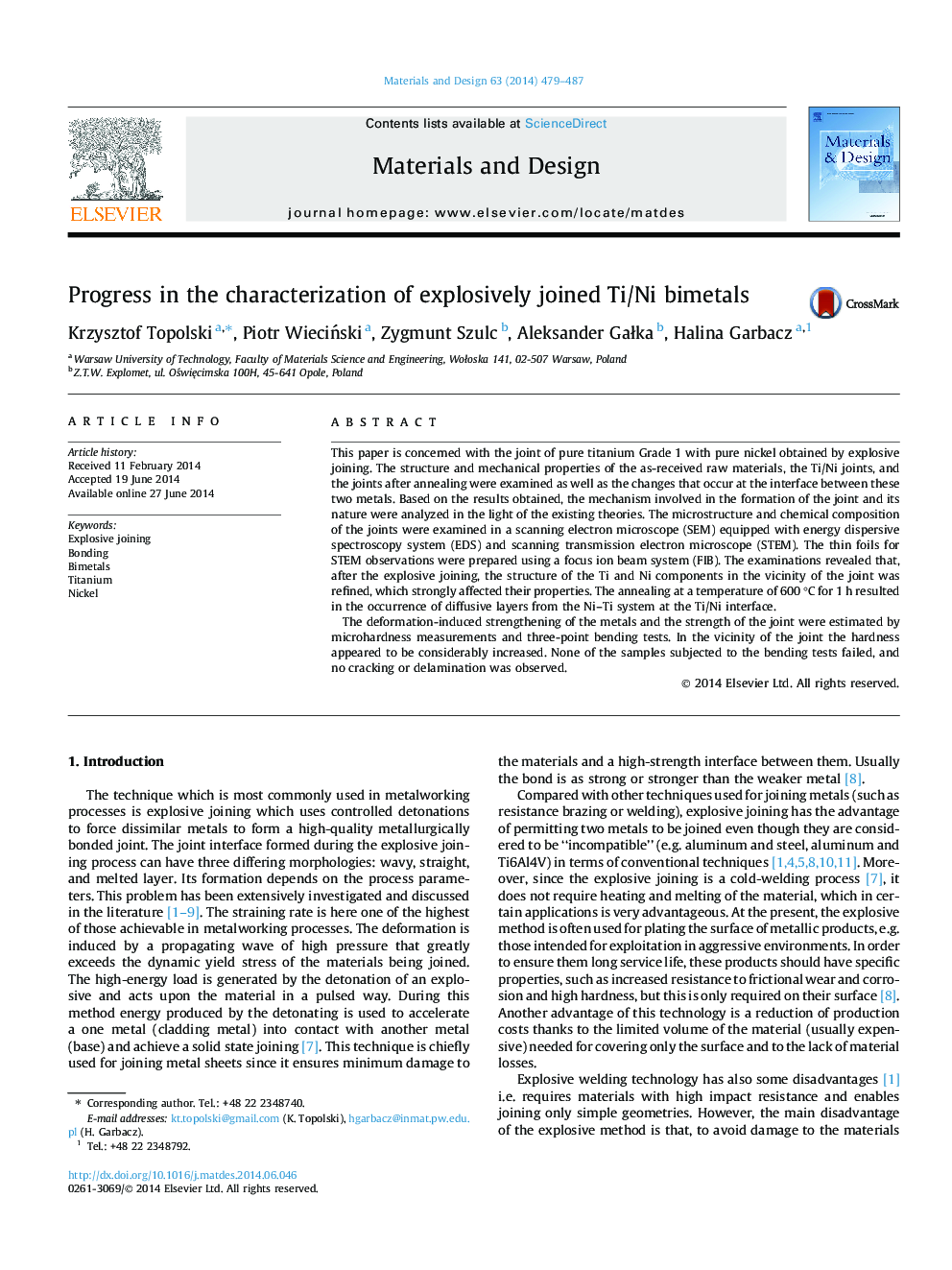| Article ID | Journal | Published Year | Pages | File Type |
|---|---|---|---|---|
| 829029 | Materials & Design (1980-2015) | 2014 | 9 Pages |
•Titanium Grade 1 and pure nickel were successfully joined by explosive technique.•None of the bimetallic samples failed during the bending test.•The structure of the Ti and Ni components in the interface was refined.•The annealing resulted in the diffusion at the Ti/Ni interface.•The plastic deformation resulted in the strengthening at the Ti/Ni interface.
This paper is concerned with the joint of pure titanium Grade 1 with pure nickel obtained by explosive joining. The structure and mechanical properties of the as-received raw materials, the Ti/Ni joints, and the joints after annealing were examined as well as the changes that occur at the interface between these two metals. Based on the results obtained, the mechanism involved in the formation of the joint and its nature were analyzed in the light of the existing theories. The microstructure and chemical composition of the joints were examined in a scanning electron microscope (SEM) equipped with energy dispersive spectroscopy system (EDS) and scanning transmission electron microscope (STEM). The thin foils for STEM observations were prepared using a focus ion beam system (FIB). The examinations revealed that, after the explosive joining, the structure of the Ti and Ni components in the vicinity of the joint was refined, which strongly affected their properties. The annealing at a temperature of 600 °C for 1 h resulted in the occurrence of diffusive layers from the Ni–Ti system at the Ti/Ni interface.The deformation-induced strengthening of the metals and the strength of the joint were estimated by microhardness measurements and three-point bending tests. In the vicinity of the joint the hardness appeared to be considerably increased. None of the samples subjected to the bending tests failed, and no cracking or delamination was observed.
